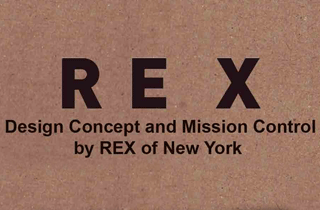Last week Foster + Partners launched the design of a school in Sierra Leone at the Royal Academy’s Summer Exhibition in London.
The project was developed in cooperation with Save the Children among others, and integrates passive ventilation systems and natural lighting.
Foster argues that it is based on a modular system that can be quickly assembled with conventional stock wood, local brush-sticks, and sheet metal. This gives the project some environmental advantages. Whats more, the modules can also be easily reconfigured to adjust to the specific needs of varying districts in Sierra Leone.
So the project is not only smart, it saves the children and the earth too.
Where I come from we say "thats a lot of bang for your buck right there!"
Starchitects worldwide should take note and follow the lead of Mr Foster. Why? Because this one is a token that comes straight from his heart.
One only has to look around at the current economic and social climate. We are in a financial crisis caused by unregulated greed and excess. Starchitects are seen as part of this piggish, extravagant and irresponsible finical sector or at least a willing accomplice. It has even come to jokes like this one:
Question: What do you call a bunch of CEOs, starchitects and bankers chained together at the bottom of the ocean?
Answer: not enough, lawyers are saints compared to you wretches...
The image is of unrestrained self indulgence... bling bling that is...

To remain respectable and relevant one must change the image from the one above to the one below
In order to understand the utter sophistication in this move I may have to do something completely radical. I will take you on my magic carpet and sweep you off to TV land.
lets go!
The first stop on our journey is the magical cloudy zone called TV phenomenology. We come upon the hip and funky kingdom of the token black guy.
The urban dictionary defines it as:
Any fictional character of African-American descent that has been inconsequentially inserted into the plot a movie or TV show for the express purposes of creating an image of commercially safe, politically correct, and insipid racial harmony. In eras gone by the token black guys would be the first characters to be killed off. This phenomena of commercial cinema and television that would sacrifice the quality of their storytelling for the sake of attempting the impossible act of offending absolutely nobody, is succinctly satirized by the aptly named south park character, Token.
Token from south park, Charley in the TV show Friends.
Any black character in any movie that is neither the protagonist nor antagonist, is unimportant to the plot and does not significantly contribute to it, preferably dies before the end, usually does not end up with the girl. sometimes is the sidekick if the role is unimportant enough, and is very often comic relief (often in stereotype-enforcing manner).
Here the character squarely defines his token role
if the balance gets out of hand then it is swiftly dealt with.
The point of a token project functions amazingly similar to the role of token black guy: it is done more or less for the express purposes of creating an image of a commercially safe, and politically correct starchitecture firm whose radical days are gone (if it ever had one).
If we look at the architect's body of work as a set of characters. We can see the token project is unimportant to the firms portfolio and does not significantly contribute to it; a sidekick really.
A proper starchitect never let the ratio of such projects get out of control. Just a small token is needed. With this project, Norm firmly places a hand over your shoulder and says "hey! I am one of the good guys".
The chart below exhibits a healthy ratio for a thriving starchitect: The irrelevant is limited to a strict minimum. Like the culture necessary to produce a fine cheese, you need just enough to get the job done.

Now lets look at exhibit B. This shows the portfolio of architect Cameron Sinclair.
There is a problem here. Can anyone identify it?

Of course! He got it all backwards; this guy is totally off his rockers.
With a portfolio like this the Pritzker is nowhere in sight for miles and miles.
We will take a closer look at this eccentric next week and learn what NOT to do, in part 2 of this series.
























































